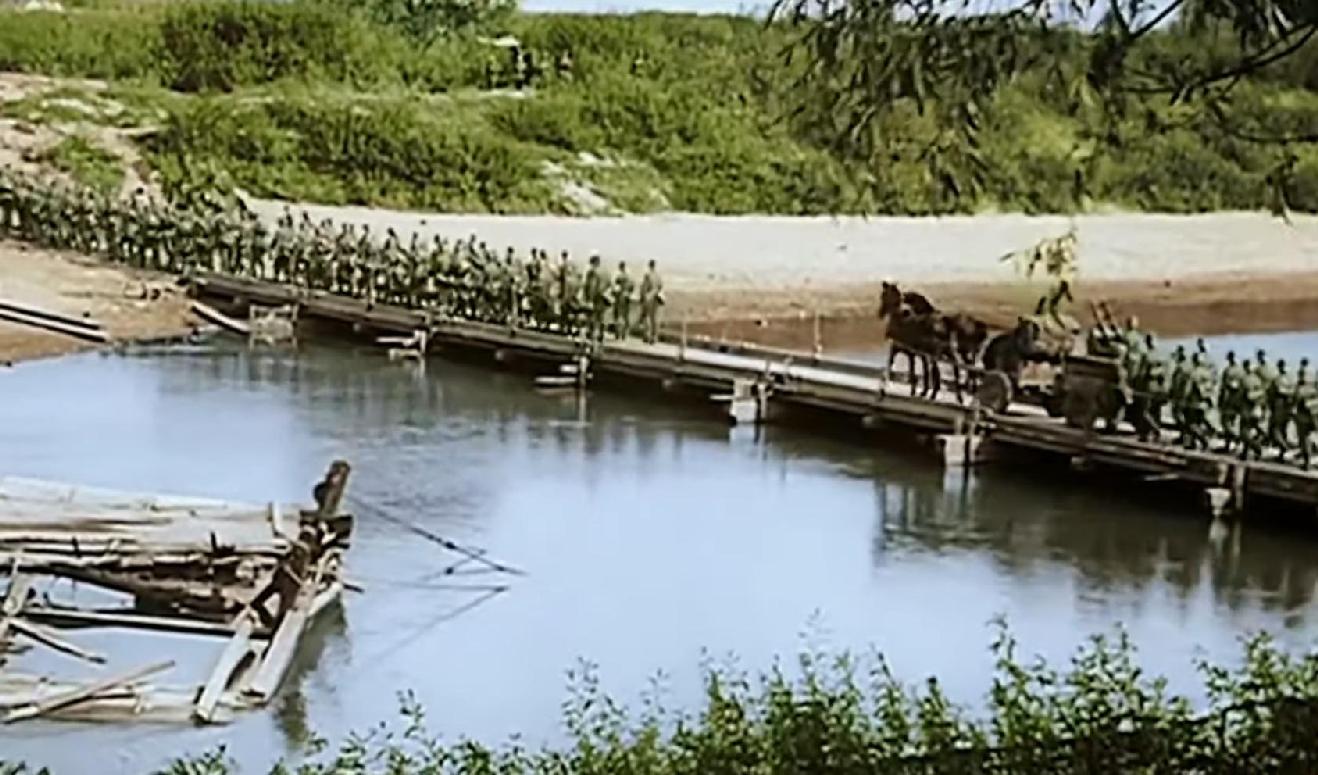
Operation Barbarossa: NAZI Invasion Force--Unmotorized Infantry

Figure 1.--World War II documentaries are filled with Gobbe's propaganda footage of Panzers barreling east at break-kneck speed. That is a force that could have won the War. Fotunately for the world, what we see here is the force that Hitler actually possessed. Some 80 oercent of the Ostheer was unmotorized infantry. And an army that had to walk all the way to Moscow with horse-drawn carts was not going to win the war.
|
|
Germany's best chance to win the war was Barbarossa. It had to destroy the Red Army in a quick, sharp camapign or face a debilitating war of attrition that it could not win. It had neither the resources nor industrial capacity to win a war of attrition. This is why it lost World War I. The problem for Germany was that destoying the Red Army required a highly motorizrd force that could strike deep into the Russian heratland and defeat the Red Army before the Siviet Union could mobilize it considerable population and resources. It alsmost did that but faltered befor Moscow as the Russian winter set in. And the primary reason it failed was that the Ostheer was not a mortorized force. There were brillant Panzer and Motorized Infantry divsions, but despite Goebbels propaganda, that was only 20 percent of the Ostheer. Some 80mpercent of the Ostheer was unmotorized infantry moving east on foot with horse-drawn carts. That was not very sufferentbthan the army with which Mapoleon invaded Russia in 1812. There was just no way, no matter how brilliant the German commanders, that such a force moving east on foot with horse-drawn carts was going to achieve a victory in a few months given the dimensions of the Soviet Union. This was Germany's fundamental weakness. Despite the superb Panzer divisions, the Germans did not have the kind of motorized army needed for victory in the East. And the trucks and other vehicles cobbeled together from all over Europe were of many different types, greatly complicating logistics and maintenance. And may of the vehicles could not withstand the riggors if the primitive Soviet road system. Entering the Soviet Uniion with the Germans were 750,000 horses--more horses than in World War I. Horse power still played a central role in the Wehrmact, both for transport and artillery. And as the weather turned cold, the Germans discovered that their horses did not have the stamina for the rigors of the Russian winter. And if this was not bad enough for the Germans, once Hitler launched Barbarossa, the deliveries of Soviet oil ceased, meaning that thed Germands would have trouble fueling the vehicles they had.
Sources
Glantz, David. Barbarossa Derailed: The Battle for Smolensk Vol. 1. (Helion & Company: 2010).
CIH -- WW II

Navigate the CIH World war II Section:
[Return to Barbarossa invasion force]
[Return to Main Operation Barbarossa page]
[Return to Main German World War II page]
[Return to World War II First phase campaign page]
[About Us]
[Aftermath]
[Biographies]
[Campaigns]
[Children]
[Countries]
[Deciding factors]
[Diplomacy]
[Geo-political crisis]
[Economics]
[Home front]
[Intelligence]
[POWs]
[Resistance]
[Race]
[Refugees]
[Technology]
[Totalitarian powers]
[Bibliographies]
[Contributions]
[FAQs]
[Images]
[Links]
[Registration]
[Tools]
[Return to Main World War II page]
[Return to Main war essay page]
[Return to CIH Home page]
Created: 6:34 PM 12/8/2007
Last updated: 6:34 PM 12/8/2007



